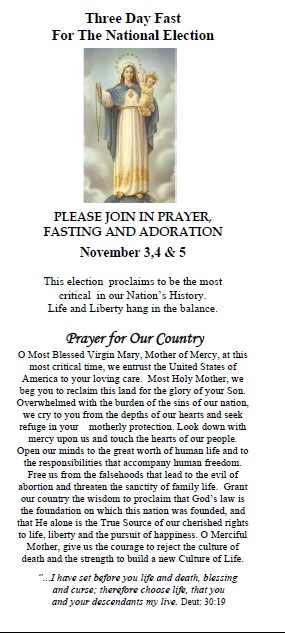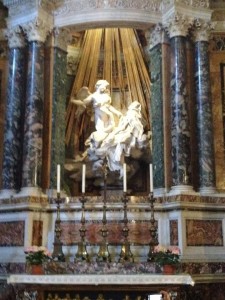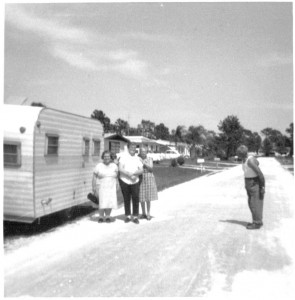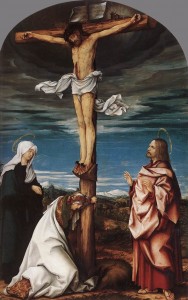The first day in this month of November is observed in the Catholic Church as All Saints Day. The Gospel reading for that day featured Jesus preaching the Sermon on the Mount in Matthew 5:1-12. The very first Beatitude is “Blessed are the poor in spirit, for theirs is the Kingdom of Heaven” (Matthew 5:3). I have been meditating on the concept of the poor in spirit since then and especially in light of current events. Whatever poor in spirit means, it appears to hold the key to blessedness and wholeness.
The Man of Constant Sorrow
Sometimes people assume that being poor in spirit means being depressed, sad, downcast, and downtrodden. Or that being poor in spirit involves a certain level of beating oneself up emotionally through scrupulosity and unnecessary guilt. Many might be quick to claim such poverty as they can see their own sorrows portrayed in descriptions of hard times and difficulties. The image of the Man of Constant Sorrow resonates with a lot of us. Especially when our challenges seem to be overwhelming and oppressive. A lighthearted song of the Man of Constant Sorrow appears in the film “O Brother Where Art Thou” performed by the fictional Soggy Bottom Boys. This humorous song pokes fun at the condition of being full of sorrow. It is a play on Isaiah 53:3 which foreshadows Jesus as “spurned and avoided by men, a man of suffering, knowing pain. Like one from whom you turn your face, spurned…” Poverty of spirit can incorporate a lot of these things and the real sorrows that people might experience are not trivial. However, the state of truly being poor in spirit means even much more.
The posture of the beggar
The Catholic Encyclopedia states that “the word poor seems to represent an Aramaic ‘ányâ (Hebrew ‘anî), bent down, afflicted, miserable, poor.” The image of a person who is “bent down” is reminiscent of the posture of a beggar.The poor among us are the most vulnerable. They are detached from wealth, prestige, and honor. They are bent over in their depravity. The Catholic Encyclopedia further describes poverty of spirit as not being limited “to economical need and distress, but may comprehend the whole of the painful condition of the poor: their low estate, their social dependence, their defenseless exposure to injustice from the rich and the mighty.”
It is easier for the physically poor to be closer to God because they have no one and nothing on which to cling. Material possessions can hold a person back as minds and souls can be filled with “stuff” leaving no room for God. In the state of poverty, empty hearts and desires are more bent and disposed towards leaning on God. The experience of feeling empty in one’s life is actually a great gift because it is really a chance to be open to God’s will and guidance. This is why many religious orders take vows of poverty so that they might aid themselves physically in mirroring what they are trying to accomplish spiritually.
Everyone needs “stuff”
Everyone needs “stuff” in this life to survive. We need a place to live, clothing to keep warm, food to eat, and a way to provide for families. Money in itself is morally neutral. According to the Catechism of the Catholic Church, the sensitive appetite leads us to desire pleasant things we do not have, e.g., the desire to eat when we are hungry or to warm ourselves when we are cold. These desires are good in themselves; but often they exceed the limits of reason and drive us to covet unjustly what is not ours and belongs to another or is owed to him (2535).
Physical poverty doesn’t guarantee a free ticket to heaven
However, just because someone is physically poor doesn’t guarantee automatic sainthood. In addition, taking on poverty doesn’t mean avoiding the responsibility to pay for something. A poor person as well as a wealthy one can become spiritually corrupt through greed for those things that are possessed by others. Envy is a sin and goes against the 10th Commandment: You shall not covet. . . anything that is your neighbor’s. . . You shall not desire your neighbor’s house, his field, or his manservant, or his maidservant, or his ox, or his ass, or anything that is your neighbor’s (Exodus 20:17).
And a person who refuses to hear or read that any sort of activity might be labeled a sin could indeed be full of his or her own self and therefore be in no way poor in spirit. A lot of persons may want to lay claim to poverty in order to get recognition and to obtain pity. It is also possible for a person to have very little in terms of material possessions and still lack spiritual interest or desire for God. They may resent any idea of religion or any person or thing representative of organized religion. Some might use poverty as an excuse to try to justify acts such as abortion or theft. They might try to reason that they cannot afford a child or that they are entitled to things that do not belong to them.
What then is being poor in spirit?
Being poor in spirit is being humble. Humility is knowing oneself in relationship to God. It is acknowledging one’s own emptiness, shallowness, and vulnerabilities. In the midst of all of the “stuff” one can still have great spiritual need. It is saying that God is needed and welcome in our lives, in our homes, in our communities, and in our nation. It is accepting that God is the Creator of the Universe and the source of all life. This involves giving credit to God for accomplishments and achievements. It is saying with confidence that God is good, even in the face of difficulties. It is praising God through the storms.
Poverty of spirit also involves being thankful. It is being grateful to God for whatever circumstances and all that one has been given or not been given. This does not involve blaming God or others when tough times come our way.
Poverty of spirit is a hunger to be filled and satisfied with God. Blessed Mother Teresa of Calcutta once said: “The greatest disease in the West today is not TB or leprosy; it is being unwanted, unloved, and uncared for. We can cure physical diseases with medicine, but the only cure for loneliness, despair, and hopelessness is love. There are many in the world dying for a piece of bread but there are many more dying for a little love. The poverty in the West is a different kind of poverty — it is not only a poverty of loneliness but also of spirituality. There’s a hunger for love, as there is a hunger for God.”
There is also hunger and thirst for justice which actually is highlighted as the fourth Beatitude: Blessed are they that hunger and thirst after justice for they shall have their fill. This involves those who stand for the Absolute Truth and do not cave into the ideology of Relativism. It is not by coincidence that Jesus gave to us the Eucharist, which is the food for spiritual sustenance and strength through our journey in life.
Seeing Jesus in the poor
Don’t ignore the poor. In them one can indeed see the face of Jesus. Those who are not as nicely dressed, who smell, and can’t afford to impress are opportunities for giving and receiving God’s love. In coming into this world, Jesus chose to be born in a barn and to be the stepson of a simple carpenter. According to Archbishop Fulton J. Sheen, “Our Lord not only preached poverty of Spirit; he also lived it, and he lived it in such a way as to conquer the three kinds of pride: the pride of what one has, which is economic pride; the pride of what one is, which is social pride; and the pride of what one knows, which is intellectual pride.” (From Sheen’s book the Cross and the Beatitudes Lessons on Love and Forgiveness).
To summarize, Archbishop Fulton J. Sheen states, “The Beatitude means then: Blessed are those who are not possessed by their possessions; blessed are they who whether or not they are poor, in fact are poor in their inmost spirit.” These are very trying times and we might indeed feel like the Man of Constant Sorrow. In whatever state one might be, pray for the grace to live with humility, gratefulness, and with a true sense of Christian charity.











